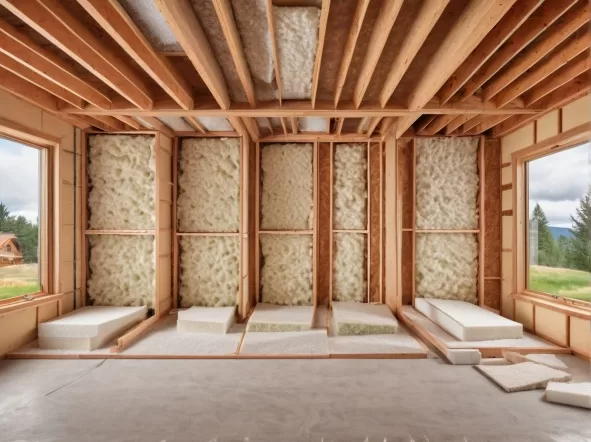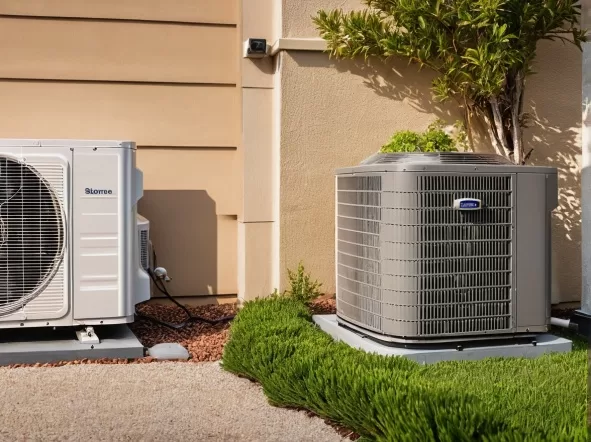Energy-Efficient Heating and Cooling Strategies for Your Home
We are constantly looking for ways to improve our living spaces, not only for comfort but also for long-term sustainability. One of the most significant aspects of home improvement lies in how we manage heating and cooling, particularly in the face of rising energy costs and environmental concerns. This post provides innovative strategies to maximize energy-efficient heating and cooling in your home, ensuring a cozy environment all year round.
Introduction
The pursuit of energy-efficient solutions is more pressing than ever. Heating and cooling systems are responsible for nearly half of a home’s energy use, making them prime candidates for efficiency upgrades. As we grapple with climate change and the increasing costs of energy, the need to adopt sustainable practices within our homes becomes crucial. But energy efficiency is not just a buzzword; it’s a pathway to smarter living, where we harness technology and nature to create environments that are as comfortable as they are eco-friendly.
1. Understanding the Basics of Energy-Efficient Heating and Cooling
Before diving into specific strategies, it’s essential to understand what energy-efficient heating and cooling truly mean. At its core, it involves using the least amount of energy to achieve the desired temperature in your home. This can be accomplished through a combination of advanced technology, smart home design, and thoughtful usage patterns.
a. The Role of Insulation
Insulation is the unsung hero of energy-efficient homes. Proper insulation in your walls, roof, and floors helps maintain the desired temperature by minimizing the exchange of heat between your home and the outside environment. This means your heating system works less in winter, and your cooling system works less in summer. High-quality insulation can reduce your energy consumption by up to 30%, making it a cornerstone of any energy-efficient strategy.

b. The Impact of Windows and Doors
Windows and doors are potential weak spots in your home’s thermal envelope. Investing in double-glazed or triple-glazed windows can significantly reduce heat loss in winter and heat gain in summer. Moreover, weather-stripping and sealing gaps around doors and windows can prevent drafts, ensuring that your heating and cooling systems don’t have to work overtime.
c. Smart Thermostats: A Game Changer
Smart thermostats are a game changer in energy-efficient home management. These devices learn your schedule and temperature preferences, adjusting your home’s temperature accordingly. For instance, they can lower the temperature when you’re asleep or away and bring it back up just before you wake up or return home. This optimization can lead to significant energy savings, often reducing heating and cooling costs by up to 20%.
2. Heating Strategies for an Energy-Efficient Home
When it comes to heating, adopting energy-efficient strategies can make a substantial difference not only in your comfort but also in your utility bills.
a. Heat Pumps: The Ultimate Efficiency
Heat pumps are among the most energy-efficient heating options available. They work by transferring heat rather than generating it, which makes them significantly more efficient than traditional heating systems. During the winter, they extract heat from the outside air (even in cold temperatures) and move it inside. In the summer, the process is reversed, and the heat pump acts as an air conditioner, expelling warm air from your home.
The upfront cost of a heat pump can be higher than other systems, but the energy savings and reduced maintenance costs can offset the initial investment within a few years.
b. Radiant Floor Heating
Radiant floor heating is a luxurious yet highly energy-efficient heating option. It works by circulating warm water through tubes embedded in the floor or by electric mats installed under the flooring. This system provides even heating throughout the room, eliminating cold spots, and because the heat rises from the floor, it warms the space more efficiently than forced-air systems.
c. High-Efficiency Furnaces and Boilers
If you prefer traditional heating methods, opting for high-efficiency furnaces or boilers is a must. Modern models, especially those with a high Annual Fuel Utilization Efficiency (AFUE) rating, convert a higher percentage of the fuel they use into heat, significantly reducing waste. Pairing these systems with a smart thermostat can further enhance their efficiency.
3. Cooling Strategies for an Energy-Efficient Home
As global temperatures continue to rise, energy-efficient cooling strategies are becoming increasingly important.
a. Air Conditioning Systems: Efficiency is Key
Central air conditioning systems can be significant energy consumers, but newer, high-efficiency models can help mitigate this. Look for systems with a high Seasonal Energy Efficiency Ratio (SEER) rating, which measures the cooling output relative to the energy consumed. High-SEER units, although more expensive upfront, will use less electricity and save you money over time.

b. Natural Ventilation: Harnessing the Power of Nature
Natural ventilation is a simple yet effective way to cool your home without consuming energy. By strategically opening windows and doors, you can create cross-breezes that naturally cool your home. This method is particularly effective during cooler evenings and nights. Ceiling fans can also help by circulating air, making the room feel cooler even at higher thermostat settings.
c. Reflective Roofing and Shading Solutions
Another powerful energy-efficient strategy is to minimize the amount of heat entering your home in the first place. Reflective roofing materials can bounce a significant portion of the sun’s rays away from your home, reducing cooling costs by up to 15%. Similarly, installing shades, blinds, or exterior awnings can block out the sun’s heat, keeping your home cooler naturally.
4. Comprehensive Strategies for Year-Round Energy Efficiency
Combining heating and cooling strategies for a holistic approach to energy-efficient home management ensures comfort throughout the year.
a. Zoning Systems: Tailored Comfort
Zoning systems divide your home into different areas, each with its thermostat. This allows you to heat or cool only the areas you’re using, avoiding energy waste in unoccupied rooms. For instance, you can keep your bedrooms cooler during the day and warmer at night while maintaining the opposite in your living areas.
b. Regular Maintenance: A Key to Longevity and Efficiency
Regular maintenance of your heating and cooling systems is crucial for maintaining energy-efficient operations. This includes changing air filters, cleaning ducts, and ensuring that your systems are running at peak performance. Neglecting maintenance can lead to inefficiencies, higher energy consumption, and even costly repairs.
c. The Role of Landscaping in Energy Efficiency
Believe it or not, your landscaping can play a significant role in your home’s energy efficiency. Strategically planting trees and shrubs around your home can provide natural insulation, shading your home in summer and acting as a windbreak in winter. Deciduous trees, which lose their leaves in winter, are particularly effective. They provide shade in the summer but allow sunlight to warm your home in the winter.
Conclusion
In conclusion, embracing energy-efficient heating and cooling strategies is more than just a trend. It’s a necessary evolution in how we think about home comfort and sustainability. By understanding the principles of energy efficiency and applying them through advanced technologies, smart design, and thoughtful habits, you can create a home that is not only comfortable year-round but also kind to both your wallet and the planet.
